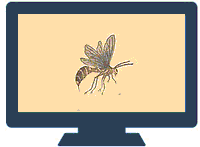Entomology, Department of

Department of Entomology: Distance Master of Science Projects
Date of this Version
2023
Document Type
Project
Citation
Master of Science Degree Project, Department of Entomology, University of Nebraska-Lincoln, 2023
Abstract
The striped cucumber beetle (Acalymma vittatum (F.)) is a specialist herbivore pest, feeding on plants in the Cucurbitaceae family across North America. Adult beetles migrate into cucurbit fields from the field edges to feed on the emerged plant parts. Control methods can include insecticides, cultural practices, and some biological control species, or a combination of multiple methods, each having their own advantages and disadvantages. A push-pull trap crop management system using blue hubbard squash (Cucurbita maxima Duchesne) and nasturtiums was established and compared to a lambda-cyhalothrin (Matador 120EC) foliar insecticide control approach in a cucumber crop. Lambda-cyhalothrin, applied at local threshold, demonstrated acceptable defoliation and A. vittatum adult beetle counts 22 DAA (days after application). However, there were no other arthropod species present in the treatment plots until 14 DAA. The cucumbers in the trap crop treatment had high levels of defoliation and adult A. vittatum beetles until 14 DAA when the blue Hubbard squash trap crop began to outcompete the cucumber crop resulting in inaccurate data collection. A plethora of arthropods could be observed in the trap crop treatment at all assessment timings. An effective trap crop could reduce the quantity of insecticide applications in a commercial crop, as well as providing everyday gardeners with a management tactic for controlling A. vittatum at home.


Comments
Copyright 2023, Keely Wright